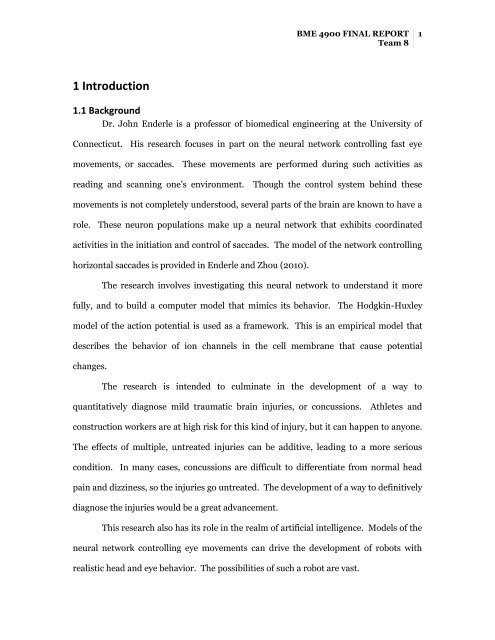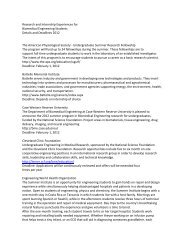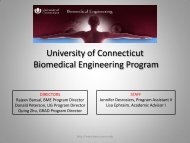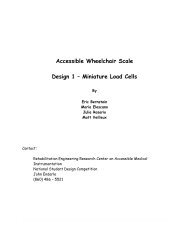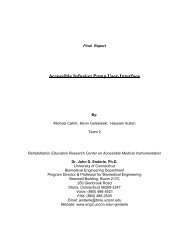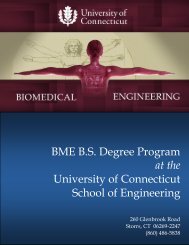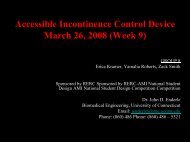BME 4900 Final Report - Biomedical Engineering - University of ...
BME 4900 Final Report - Biomedical Engineering - University of ...
BME 4900 Final Report - Biomedical Engineering - University of ...
You also want an ePaper? Increase the reach of your titles
YUMPU automatically turns print PDFs into web optimized ePapers that Google loves.
<strong>BME</strong> <strong>4900</strong> FINAL REPORT 1Team 81 Introduction1.1 BackgroundDr. John Enderle is a pr<strong>of</strong>essor <strong>of</strong> biomedical engineering at the <strong>University</strong> <strong>of</strong>Connecticut. His research focuses in part on the neural network controlling fast eyemovements, or saccades. These movements are performed during such activities asreading and scanning one’s environment.Though the control system behind thesemovements is not completely understood, several parts <strong>of</strong> the brain are known to have arole. These neuron populations make up a neural network that exhibits coordinatedactivities in the initiation and control <strong>of</strong> saccades. The model <strong>of</strong> the network controllinghorizontal saccades is provided in Enderle and Zhou (2010).The research involves investigating this neural network to understand it morefully, and to build a computer model that mimics its behavior. The Hodgkin-Huxleymodel <strong>of</strong> the action potential is used as a framework. This is an empirical model thatdescribes the behavior <strong>of</strong> ion channels in the cell membrane that cause potentialchanges.The research is intended to culminate in the development <strong>of</strong> a way toquantitatively diagnose mild traumatic brain injuries, or concussions.Athletes andconstruction workers are at high risk for this kind <strong>of</strong> injury, but it can happen to anyone.The effects <strong>of</strong> multiple, untreated injuries can be additive, leading to a more seriouscondition. In many cases, concussions are difficult to differentiate from normal headpain and dizziness, so the injuries go untreated. The development <strong>of</strong> a way to definitivelydiagnose the injuries would be a great advancement.This research also has its role in the realm <strong>of</strong> artificial intelligence. Models <strong>of</strong> theneural network controlling eye movements can drive the development <strong>of</strong> robots withrealistic head and eye behavior. The possibilities <strong>of</strong> such a robot are vast.


